8 Things to Plant Now for Your Fall Vegetable Garden
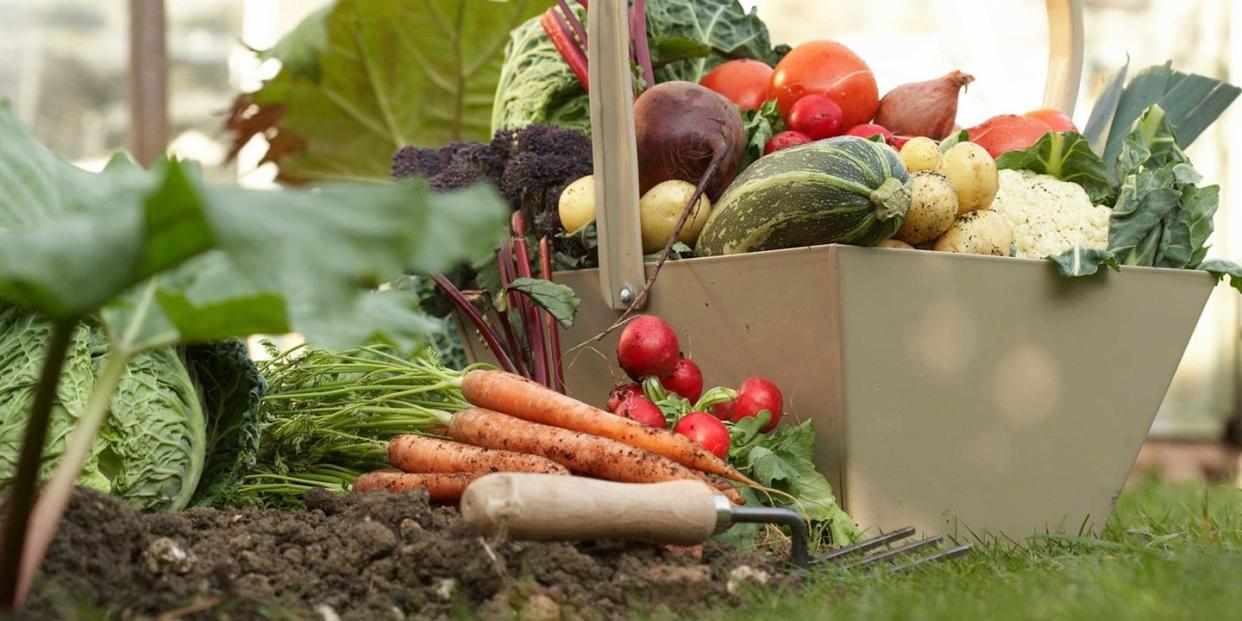
Although we're smack dab in the middle of the growing season with warm-weather lovers such as peppers, tomatoes, and zucchini overflowing from your garden, it's time to think about your fall crops. Mid- to late-July and early August—or even later in some parts of the country—are ideal times to plant veggies for fall picking. "Some of the best vegetables are ready when the weather turns cooler," says Edward C. Smith, author of The Vegetable Gardener's Bible and Incredible Vegetables from Self-watering Containers. "Certain crops not only survive cold weather, they actually thrive in it and taste sweeter because of the production of sugars which help prevent them from freezing."
While you can look for transplants at garden centers for some of these plants, many can be direct-seeded right into the ground. "Get these plants established before cold weather," says Colin McCrate, owner and founder of Seattle Urban Farm Company and author of Food Grown Right, in Your Backyard and High-Yield Vegetable Gardening. "You want them to put in a root system and size up so they'll tolerate cooler temperatures and fewer hours of daylight as we move into autumn."
To help your fall crops flourish, add compost to your beds before planting, especially if you had a previous crop in the same place this season. Spread organic mulch to preserve moisture and keep the soil temperature cooler, which many of these plants prefer. Water any seeded crop regularly until it germinates, and don't let baby seedlings get scorched. "If seedlings dry out, they're toast," says McCrate.
Here are some of the best edibles to plant right now for autumn bounty:
Spinach
What it needs: Sow spinach directly into your garden in late July or early August. Because it doesn't germinate well in temperatures higher than 85 degrees, help reduce soil temperature by keeping it moist. After the first frost (or even the first snow), spinach may look frozen or wilted, but wait for the sun to come out and perk it up, then harvest. "I've seen spinach survive under snow well into winter. It's incredibly hardy," says Smith.
Varieties to try: Red Kitten or Emperor, although almost any type of spinach performs well in cool temperatures.
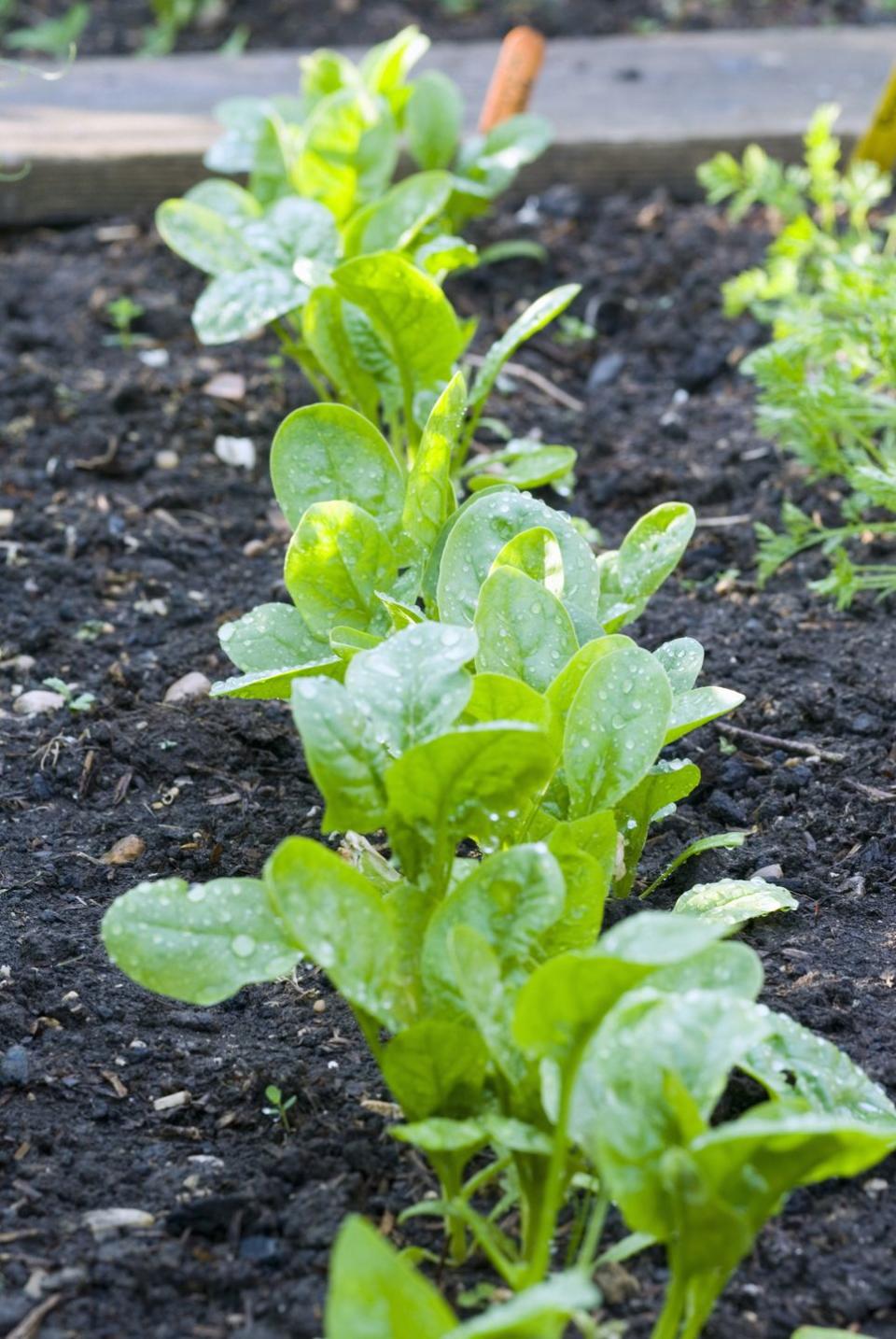
Radishes
What it needs: Plant no later than mid-August or late August in more moderate climates. Keep the soil moist while seeds are trying to germinate. Radishes mature in about a month. They don't store for long periods in the ground, so harvest as soon as you see the radish pushing up through the soil, says McCrate. They can handle cold but don't like a frost.
Varieties to try: Cherriette, French breakfast, or watermelon, which produce best in fall.
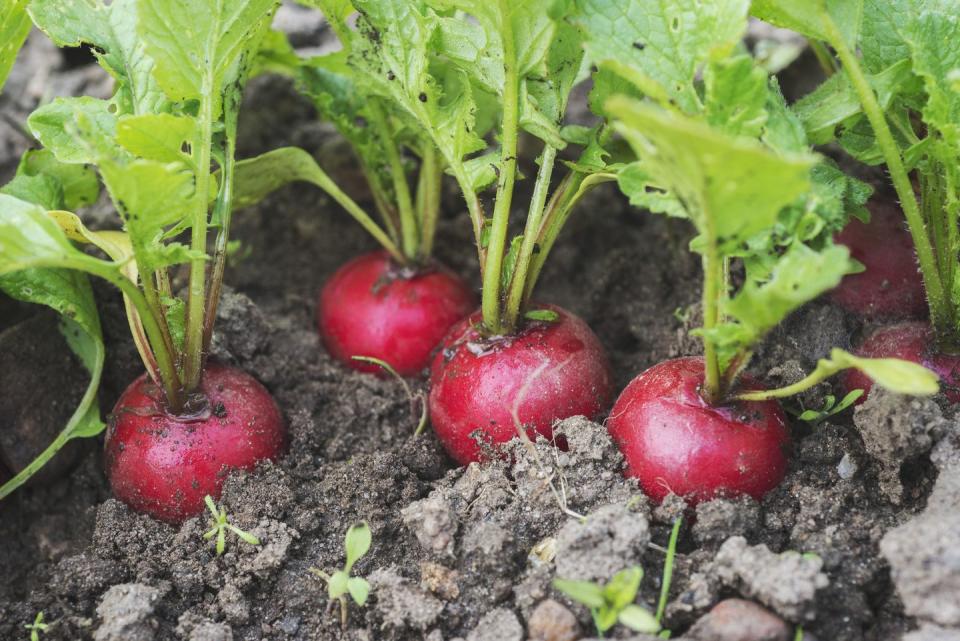
Carrots
What it needs: Sow carrot seeds by late July to early August. Keep the soil moist because they won't germinate in dry soil. Thin plants because if they're too close together, they'll be stunted and deformed. Try mulching with straw to make your harvest last longer. While they won't keep growing in cold weather, they will become sweeter-tasting after a frost, says Smith.
Varieties to try: Scarlet Nantes, Nelson and Napoli
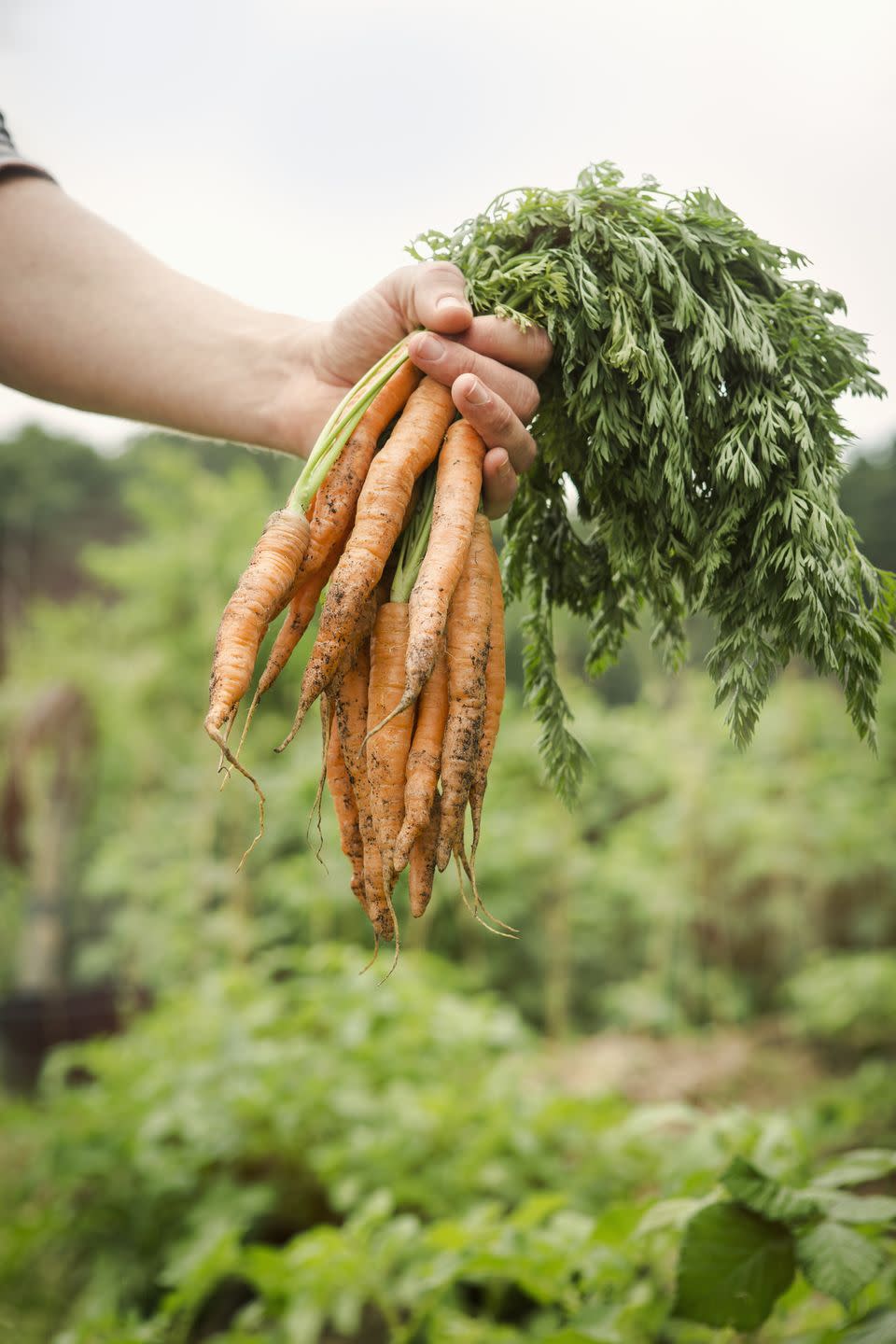
Cilantro
What it needs: Plant cilantro in mid-to late summer for a fall crop. Sow successive crops over a week to maintain a fresh supply as this plant flowers and seeds quickly. Once plants go to seed, harvest and dry the seeds, which are coriander. Cilantro is somewhat frost tolerant, and established plants may live through winter in moderate climates, says McCrate.
Varieties to try: Calypso or Santo, which is slower to go to seed.

Pansies or Violas
What it needs: Plant these anytime throughout the season for pretty and delicious garnishes for salads or baked goods. They have good frost tolerance and will keep for a few days in the fridge in a plastic bag, says McCrate.
Varieties to try: Choose a selection of colors such as Penny All Season mix.
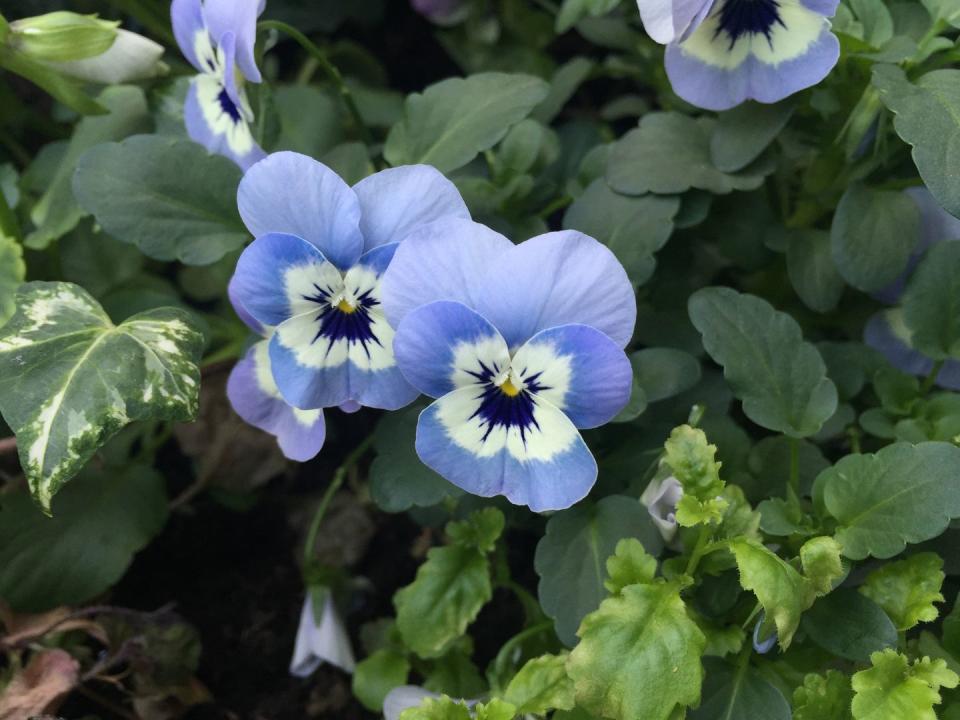
Kale
What it needs: Kale should be planted no later than mid-August. It will withstand a heavy frost, and its flavor is improved by cold weather due to the glucose production. "Kale is worth growing because the plants produce a lot of food for the space they take up," says McCrate. To keep plants going, harvest only a few leaves at a time from each plant. Some types may overwinter and rebound in the spring.
Varieties to try: Winterbor, Lacinato, or Red Russian, which has more tender leaves. Kale flowers also are edible.
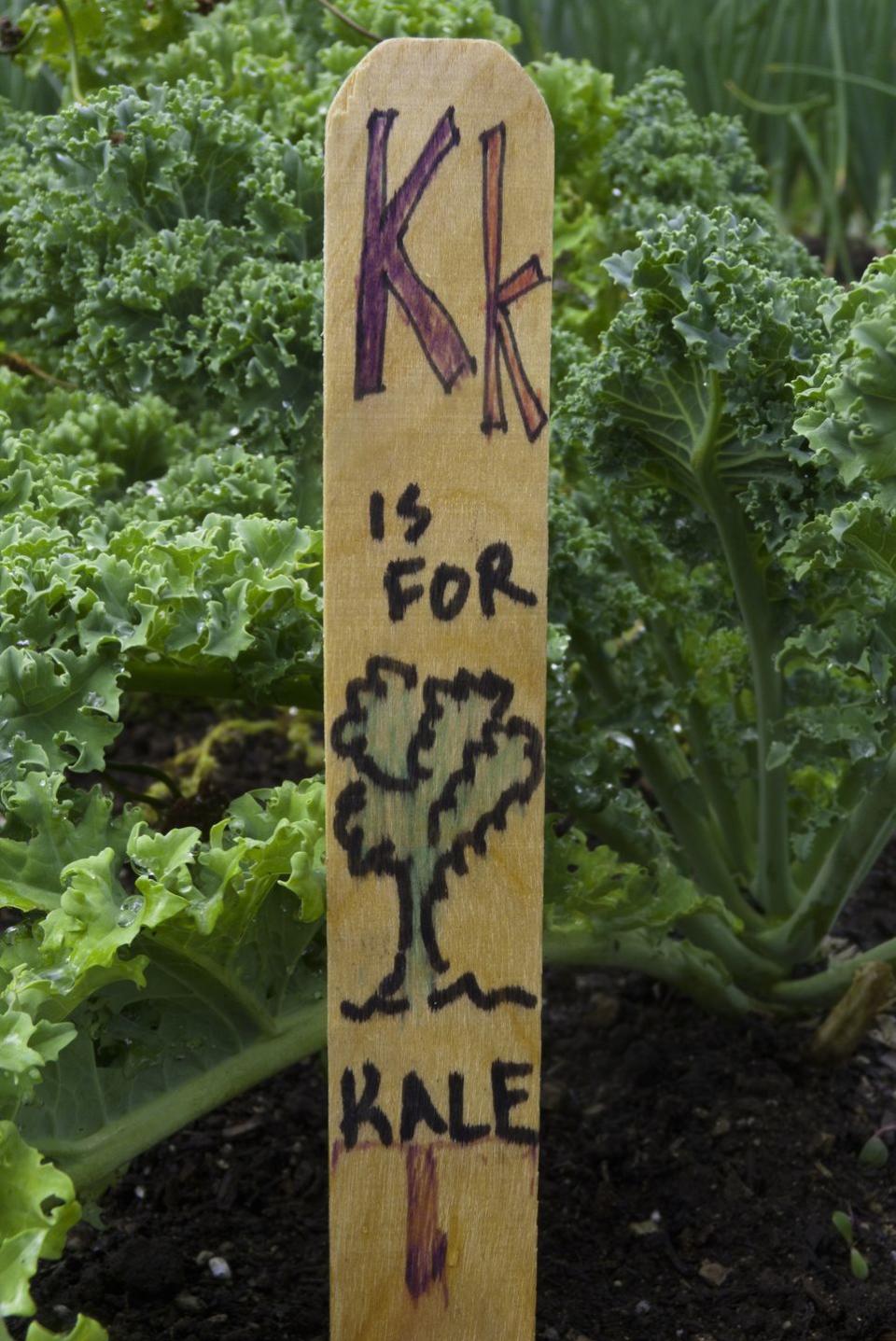
Broccoli
What it needs: Get broccoli in the ground by late July or early August. Transplants typically do better, but you can direct seed, too, if you can't find plants. Broccoli is hungry and thirsty, so add compost before planting to help the soil hold moisture. "It's not the ultimate cold survivor spinach is, but colder weather does impart a sweetness because of the sugars produced," says Smith.
Varieties to try: Bay Meadows, Marathon, or Arcadia, which has the best cold tolerance.
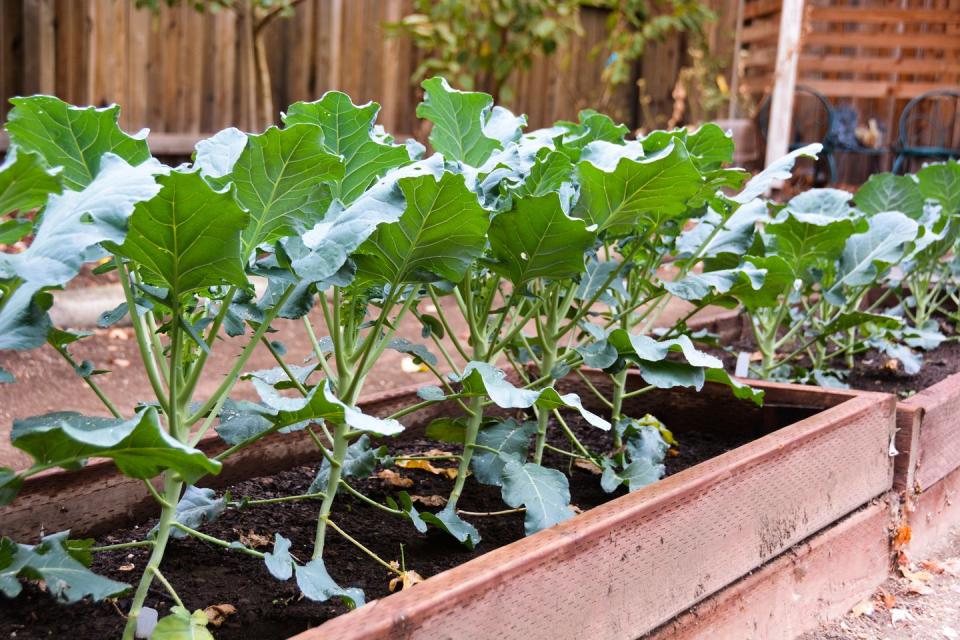
Salad Greens
What it needs: Mixed baby lettuces are very easy to grow from seed, though they won't germinate if it's too hot. If it's still sweltering, plant in shadier spots or drape shade cloth over rows. Keep soil moist to reduce soil temperature. Hand watering also cools the greens down on hot days. Lettuce grows well in containers, too, says McCrate.
Varieties to try: Arugula Surrey or any mesclun mix that includes red and green lettuce. For head lettuce, try transplants of Winter Density, or grow Brune d'hiver, an heirloom variety that's extra cold-hardy, from seed.
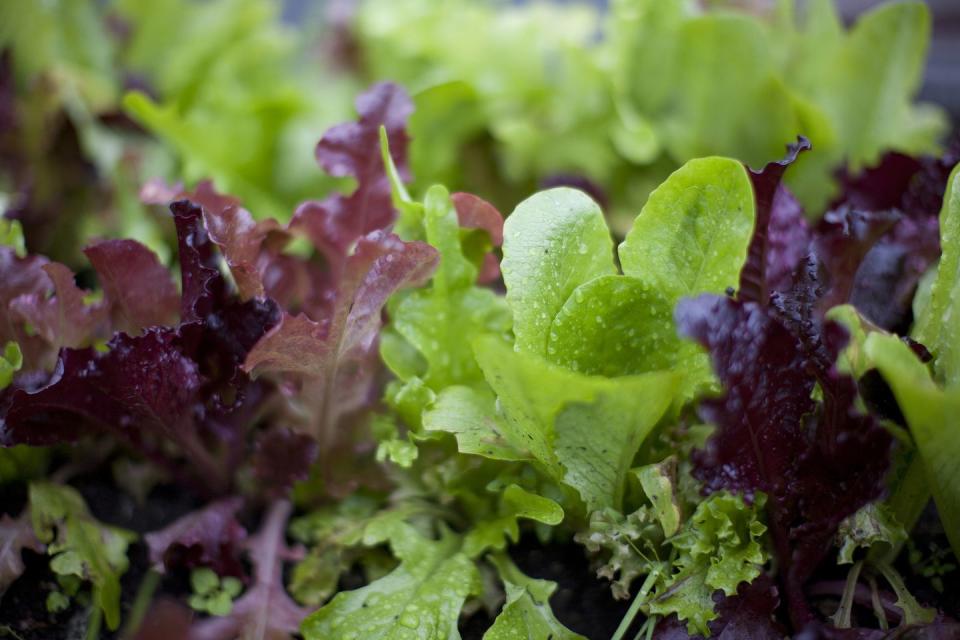
You Might Also Like

